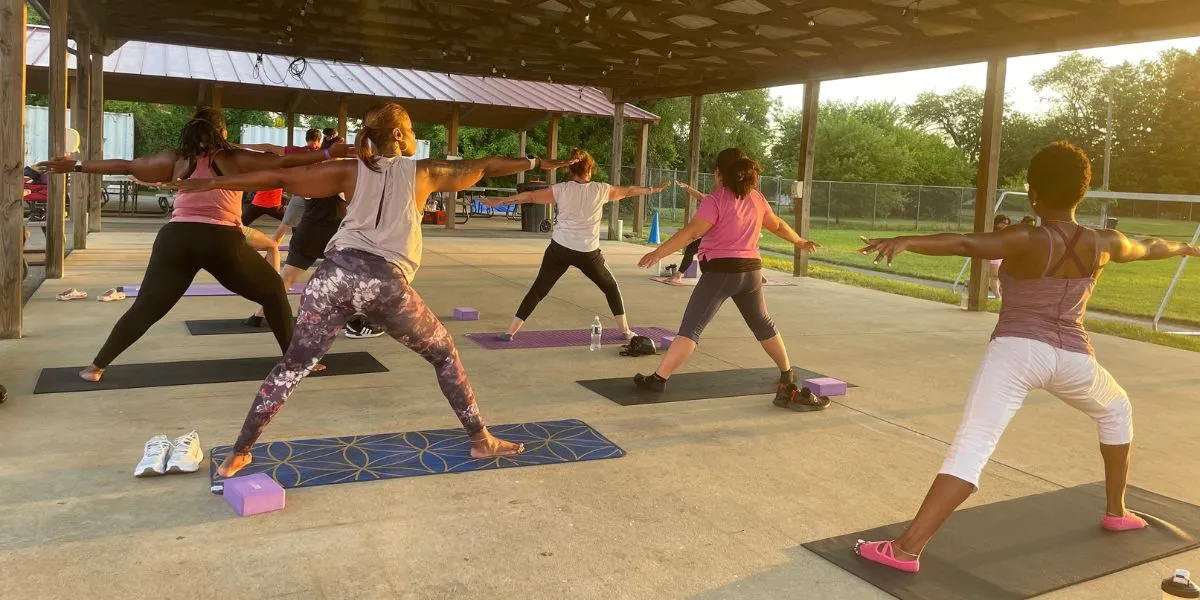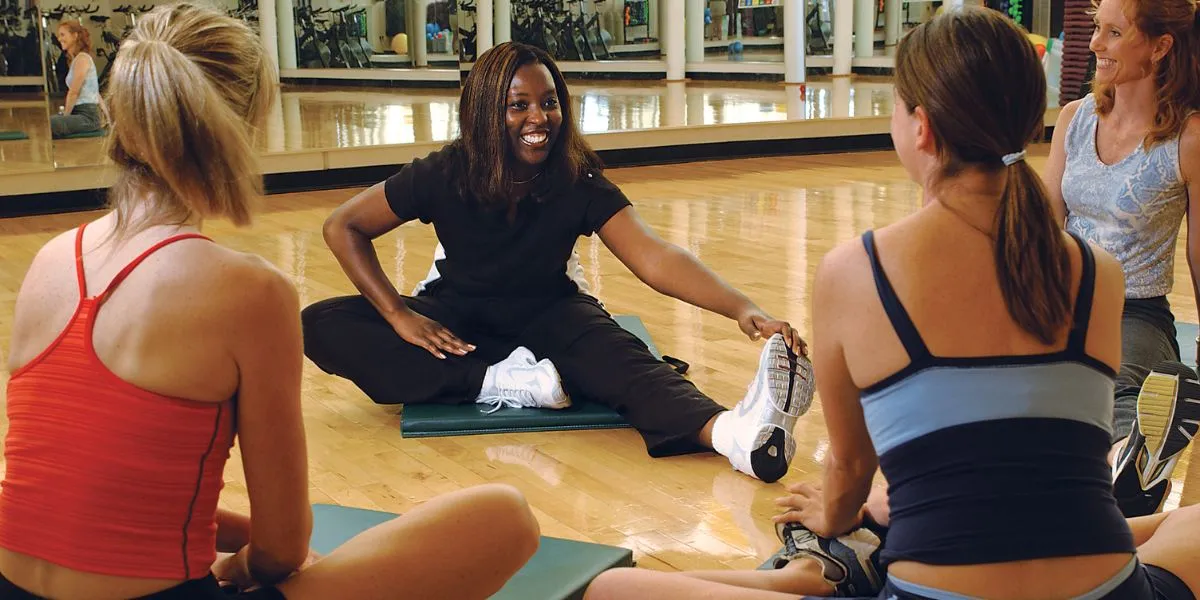
Published: 08/14/2024 - 8:00 AM
Different Types of Yoga and Their Benefits
If you've ever considered practicing yoga, you may not be aware of the various disciplines within the practice. They all share a common goal — helping you enjoy a greater mind-body connection through stretching, breathing, and a range of movements. Each style has a unique history and purpose.
While you don't need an in-depth understanding of each style to get started, exploring the different types of yoga and their benefits will help you find where to start, as some practices are beginner-friendly, and some are better for experienced yogis.
What Is Yoga?
Yoga is an ancient spiritual system with roots in India. It has become a popular wellness practice today, promoting physical and mental well-being. The exercises involve physical postures, meditation, and breathing techniques for elevating the mind-body connection, supporting relaxation, and improving mental clarity.
An Overview of Yoga History
The origins of yoga go back thousands of years, originating in the Himalayas. Mentioned in the sacred texts of Ancient India, yoga appears to have been fully expressed in the Indus Valley civilization. Throughout history, yoga evolved, becoming a more complex philosophical system with different practices and dozens of postures, ranging from gentle stretches to physically demanding exercises.
Today, yoga is an established part of Hinduism and Buddhism and has developed various practices that promote calmness, flexibility and better health. As a modern exercise system in the Western world, yoga balances the following elements for overall well-being:
- Movement (Asana)
- Meditation (Dhyana)
- Energy and breath awareness (Pranayama)
Types of Yoga and Their Benefits
Yoga is immensely popular, with more than 33 million participants in the United States in 2023. Its prevalence comes down to the mental and physical advantages associated with various yoga types and practices within the main system.
Here are some of the common types of yoga and their unexpected benefits:
Hatha Yoga
Hatha yoga is a branch of yoga that embodies basic movements and is often a great place to start on your journey. Many other types of yoga use this practice as a basis. It includes the basics of postures, meditation, and breathing.
Since it's a gentle discipline with a broad overview of different exercises, it offers a relaxing experience and a glimpse into what yoga is about. Some top benefits of Hatha yoga include:
- Building strength and flexibility
- Promoting mindfulness
- Enhancing relaxation
- Lowering stress levels
- Teaching controlled breathing
Vinyasa Yoga
Vinyasa, also called vinyasa flow yoga, is another common practice. Like Hatha, it’s a broad category comprising many of the exercises found in other yoga types. It also focuses on poses and breathing exercises, but with a few important differences. Vinyasa tends to be a slightly more intense and faster-paced practice, which would be a great next step for a newbie.
The Vinyasa style is designed to take you deeper into yoga poses, exposing you to a wide variety. It's known as flow yoga because it focuses on a series of postures completed in a series instead of individual poses followed by rest intervals.
One of the key benefits of Vinyasa yoga is its link to reduced levels of blood sugar and cholesterol. Its moderate pace improves cardiovascular health, overall fitness, and flexibility.
Restorative Yoga
As the name suggests, restorative yoga is meant to renew your sense of well-being and make you feel better. The style is more laidback, with restful postures that you hold while paying attention to your breathing and thoughts.
As a less energetic style, this yoga type is fantastic for beginners. It promotes deep relaxation and a sense of general well-being. The benefits of restorative yoga include:
- Improving mental health
- Enhancing your core strength
- Improving flexibility
Ashtanga Yoga
Ashtanga is a classic athletic yoga style that follows a sequence of yoga poses, one after another. This yoga style does not immerse you in various poses — you practice only a specific set of poses in the same order.
With Ashtanga, there's a strong focus on breath count, as each pose requires a certain number of breaths before you can move to the next. The whole routine combines movement, visual focus, and breath control.
While Ashtanga is intense, it's divided into the traditional yogi-led and the self-paced Mysore styles. In the traditional style, a teacher leads the sequences. In Mysore Ashtanga, you learn and practice at your own pace, which helps you set realistic fitness goals as a beginner.
In addition to increasing flexibility, strength, concentration and balance, the top advantages of Ashtanga yoga include improving your cardiovascular health and achieving greater mental clarity.
Yin Yoga
Yin yoga is a gentle and meditative yoga style with roots in Taoism. Unlike Ashtanga and Vinyasa, Yin is about cultivating inner strength while holding challenging poses for long durations. The focus isn't on progressing through a sequence but on accessing deep connective tissues like joints and ligaments, so practitioners rest in their postures for a specific period of time.
While Yin is a passive style, it can be challenging. Many of the postures and poses put various body parts to the test. Key benefits of Yin yoga include lowering stress and anxiety levels, balancing mood, and increasing flexibility.
Kundalini Yoga
Kundalini yoga is an ancient practice with a strong spiritual background. It's centered on the idea that we all have an energy reserve at the base of our spine, and through Kundalini exercises, we can tap into that energy and allow it to flow freely around the body. These exercises include chanting, breathing, singing, meditation, and repetitive poses.
Unlike other yoga types, Kundalini is a more spiritual form that promotes self-awareness. It's also more repetitive, with lengthy poses and demanding breathing exercises. The primary advantages of practicing Kundalini yoga include:
- Reducing stress and anxiety
- Improving self-awareness and positivity
- Providing a good cardio workout
Unlock the Benefits of Yoga at the Greater Philadelphia YMCA
Many studies on the health benefits of yoga have found evidence that these principles can improve your overall well-being. With different types of yoga at your disposal, you may wonder where to start. A beginner class lets you experience the practice and enables you to enjoy its benefits. Yoga and its many styles can accommodate all ages and abilities.
Explore the group exercise schedules at our locations across the greater Philadelphia region to find the right yoga class for you. Not sure where to start? Speak with one of our fitness coaches about your interest in yoga or set up a fitness consultation.
At the Y, we're here to help you connect to a healthier life by providing access to a variety of methods for you to enjoy exercising while reaching your fitness goals.

